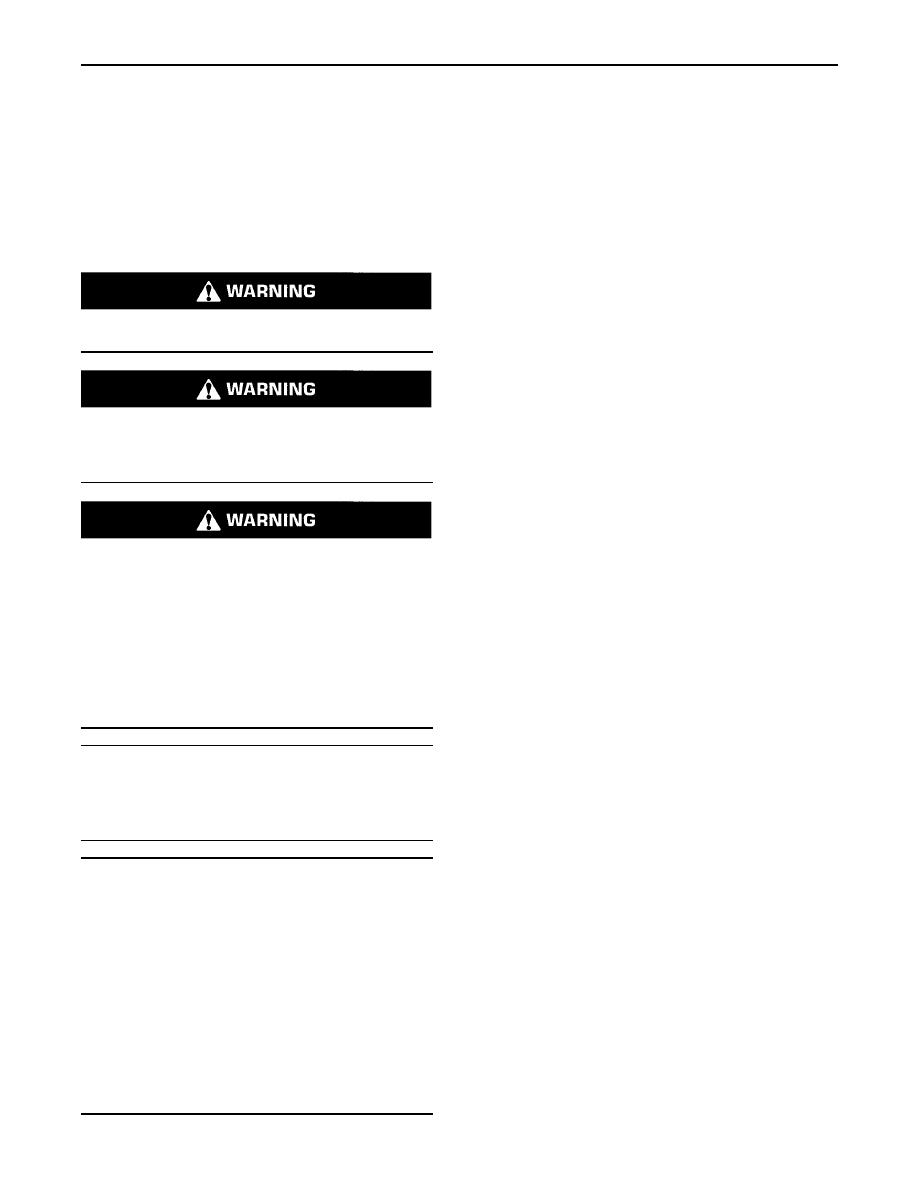 |
|||
|
|
|||
|
|
|||
| ||||||||||
|
|
 TM 9-2320-312-24-2
Testing and Adjusting Section
If the back pressure exceeds 14.9 kPa
Before you begin inspection of the turbocharger,
(60 inch of H2O), replace the catalytic
be sure that the inlet air restriction is within the
specifications for your engine. Be sure that the
converter/muffler.
exhaust system restriction is within the specifications
for your engine. Refer to Systems Operation/Testing
i01388605
and Adjusting, "Air Inlet and Exhaust System -
Turbocharger - Inspect
Inspect".
The condition of the turbocharger will have definite
SMCS Code: 1052-040
effects on engine performance. Use the following
inspections and procedures to determine the
condition of the turbocharger.
Disconnect batteries before performance of any
Inspection of the Compressor and the Compressor
service work.
Housing
Inspection of the Turbine Wheel and the Turbine
Housing
Hot engine components can cause injury from
Inspection of the Wastegate
burns. Before performing maintenance on the
engine, allow the engine and the components to
Inspection of the Compressor and
cool.
the Compressor Housing
Remove air piping from the compressor inlet.
Personal injury can result from rotating and mov-
ing parts.
foreign object. If there is damage, determine the
source of the foreign object. As required, clean
Stay clear of all rotating and moving parts.
the inlet system and repair the intake system.
Replace the turbocharger. If there is no damage,
Never attempt adjustments while the machine is
go to Step 3.
moving or the engine is running unless otherwise
specified.
compressor housing if you find buildup of foreign
The machine must be parked on a level surface
material. If there is no buildup of foreign material,
and the engine stopped.
go to Step 3.
3. Turn the rotating assembly by hand. While you
NOTICE
turn the assembly, push the assembly sideways .
Keep all parts clean from contaminants.
The assembly should turn freely. The compressor
wheel should not rub the compressor housing.
Contaminants may cause rapid wear and shortened
Replace the turbocharger if the compressor
component life.
wheel rubs the compressor wheel housing. If
there is no rubbing or scraping, go to Step 4.
NOTICE
4. Inspect the compressor and the compressor
Care must be taken to ensure that fluids are contained
wheel housing for oil leakage. An oil leak from
during performance of inspection, maintenance, test-
the compressor may deposit oil in the aftercooler.
ing, adjusting and repair of the product. Be prepared to
Drain and clean the aftercooler if you find oil in
collect the fluid with suitable containers before open-
the aftercooler.
ing any compartment or disassembling any compo-
nent containing fluids.
level is too high, adjust the oil level.
Refer to Special Publication, NENG2500, "Caterpillar
Tools and Shop Products Guide" for tools and supplies
b. Inspect the air cleaner element for restriction.
suitable to collect and contain fluids on Caterpillar
If restriction is found, correct the problem.
products.
Dispose of all fluids according to local regulations and
the engine crankcase breather or replace
mandates.
the engine crankcase breather if the engine
crankcase breather is plugged.
|
|
Privacy Statement - Press Release - Copyright Information. - Contact Us |